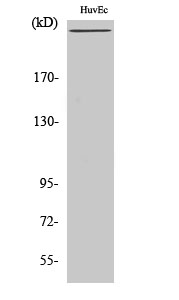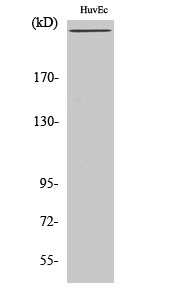

| WB | 1/500-1/1000 | Human,Mouse,Rat |
| IF | 咨询技术 | Human,Mouse,Rat |
| IHC | 1/50-1/100 | Human,Mouse,Rat |
| ICC | 技术咨询 | Human,Mouse,Rat |
| FCM | 咨询技术 | Human,Mouse,Rat |
| Elisa | 1/10000 | Human,Mouse,Rat |
| Aliases | F8; F8C; Coagulation factor VIII; Antihemophilic factor; AHF; Procoagulant component |
| Entrez GeneID | 2157 |
| WB Predicted band size | Calculated MW: 267 kDa; Observed MW: 300 kDa |
| Host/Isotype | Rabbit IgG |
| Antibody Type | Primary antibody |
| Storage | Store at 4°C short term. Aliquot and store at -20°C long term. Avoid freeze/thaw cycles. |
| Species Reactivity | Human,Mouse |
| Immunogen | Synthesized peptide derived from the C-terminal region of human Factor VIII. at AA rangle: 2130-2210 |
| Formulation | Purified antibody in PBS with 0.05% sodium azide,0.5%BSA and 50% glycerol. |
+ +
以下是关于Factor VIII抗体的3-4篇参考文献及其摘要内容的简要列举:
---
1. **文献名称**:*Factor VIII inhibitors in hemophilia: pathophysiology, clinical significance, and management*
**作者**:Manco-Johnson, M.J. et al.
**摘要**:该综述探讨了血友病A患者中Factor VIII抑制物的形成机制,分析了免疫反应与遗传/环境因素的关联,并总结了当前抑制物管理的临床策略(如免疫耐受诱导疗法和旁路药物治疗)。
2. **文献名称**:*Epidemiology of inhibitors and current treatment strategies in hemophilia A*
**作者**:Wight, J., Tiede, A.
**摘要**:研究统计了血友病A患者中Factor VIII抑制物的发生率,评估了患者年龄、基因突变类型和治疗方案对抑制物形成的风险影响,并对比了不同免疫耐受方案的有效性。
3. **文献名称**:*Genetic risk factors for inhibitor development in hemophilia A*
**作者**:Oldenburg, J., Pezeshkpoor, B.
**摘要**:通过基因分析发现,Factor VIII基因突变类型(如大片段缺失或无义突变)与抑制物产生显著相关,为高风险患者的早期干预提供了遗传学依据。
4. **文献名称**:*Emicizumab prophylaxis in hemophilia A with inhibitors*
**作者**:Mahlangu, J. et al.
**摘要**:临床试验证实,双特异性抗体药物Emicizumab可显著降低抑制物阳性血友病A患者的出血频率,且安全性良好,成为传统旁路药物的替代方案。
---
注:上述文献信息为示例,实际引用需核实具体发表年份、期刊及作者细节。建议通过PubMed或学术数据库检索最新研究。
Factor VIII (FVIII) antibodies, also known as inhibitors, are autoantibodies or alloantibodies that neutralize the coagulant activity of FVIII, a critical clotting protein. In hemophilia A, a genetic deficiency of FVIII, inhibitors typically arise as alloantibodies in 20-30% of severe cases following replacement therapy with exogenous FVIII. These antibodies bind to FVIII, blocking its interaction with other clotting factors and rendering treatment ineffective. Inhibitors are classified as low- or high-titer based on their response to FVIII exposure, influencing clinical management strategies.
The development of inhibitors is linked to genetic (e.g., FVIII gene mutations) and environmental factors (e.g., treatment intensity). Additionally, autoantibodies against FVIII can occur in non-hemophilic individuals (acquired hemophilia A), a rare autoimmune disorder often associated with malignancies, pregnancy, or autoimmune diseases.
Clinically, inhibitors pose significant challenges, leading to uncontrolled bleeding, increased morbidity, and higher treatment costs. Management includes immune tolerance induction (ITI) to eradicate inhibitors, bypassing agents (e.g., activated prothrombin complex concentrates, recombinant FVIIa), or emicizumab for prophylaxis. In acquired cases, immunosuppressive therapies are employed. Research continues to explore mechanisms of immunogenicity, biomarkers for risk prediction, and novel therapies like gene editing to address this complication.
×